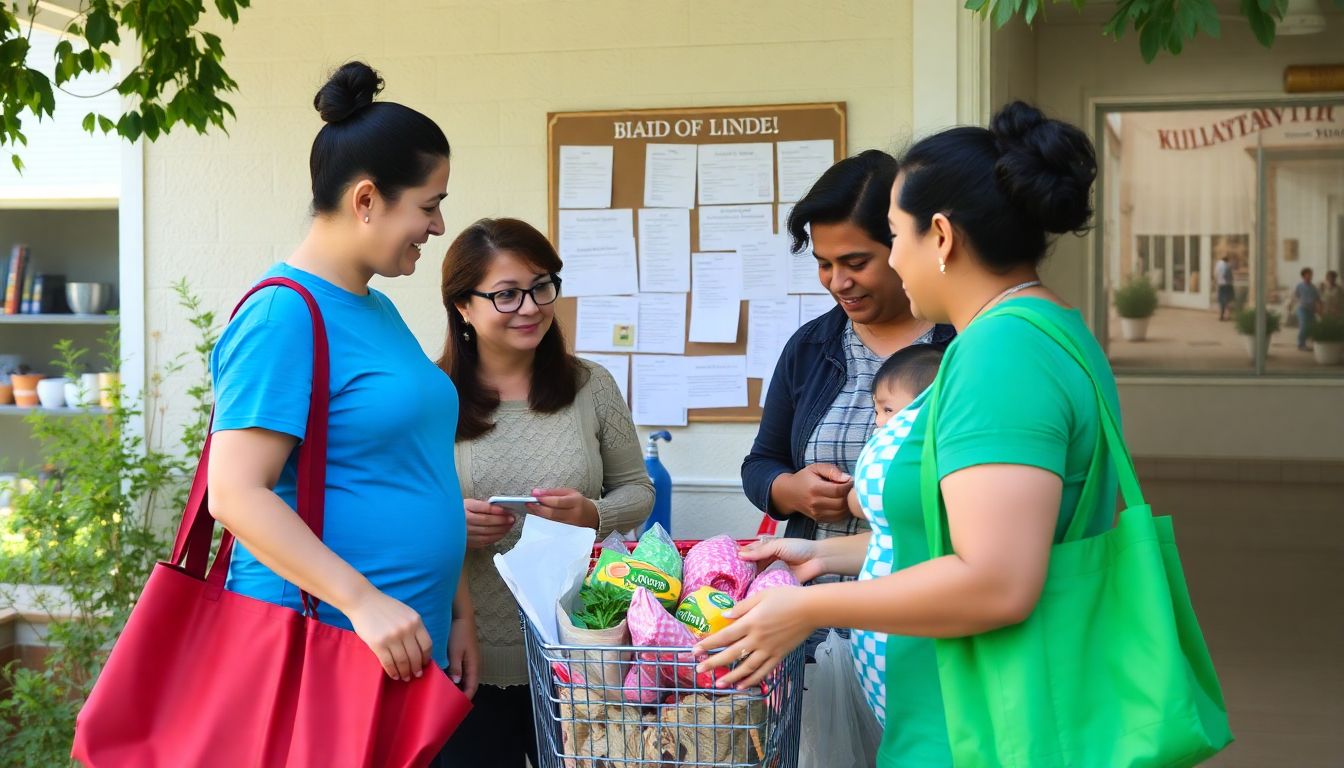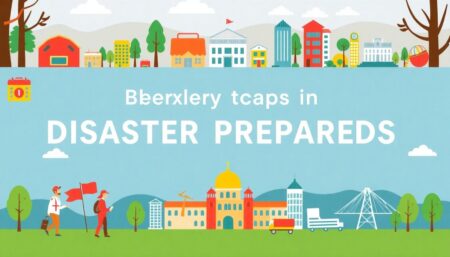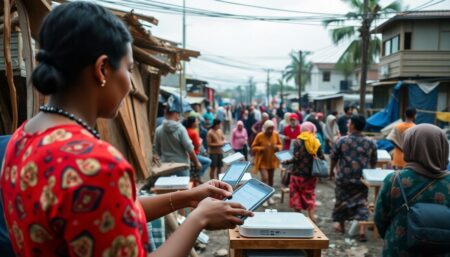In the not-so-distant past, the world has faced several disease outbreaks that have tested our collective resilience and highlighted the importance of pandemic survival and disease outbreak preparedness. From the 2003 SARS outbreak to the 2014 Ebola epidemic, and most recently, the COVID-19 pandemic, these health crises have reminded us that nature can catch us off guard, and being ready can mean the difference between safety and chaos. But what does it truly mean to be prepared? And how can we, as individuals and communities, enhance our health crisis readiness?
According to the World Health Organization, the global cost of outbreaks is estimated to be around $60 billion annually, with the economic impact of the COVID-19 pandemic alone projected to reach trillions of dollars. These staggering figures underscore the urgent need for comprehensive pandemic survival strategies. This article, ‘The Prepper’s Guide to Surviving a Pandemic: Lessons from Recent Outbreaks’, aims to equip you with the knowledge and tools necessary to navigate the challenges posed by infectious diseases.
By the end of this guide, you will have a clear understanding of the key aspects of pandemic survival, from understanding the nature of outbreaks and their potential impacts, to creating a robust preparedness plan, and implementing effective strategies to protect your health and that of your loved ones. We will delve into the lessons learned from recent outbreaks, providing real-life examples and expert insights to illustrate our points. So, whether you’re a seasoned prepper or simply someone who wants to be better informed, this article is for you. Let’s embark on this journey together, as we explore the fascinating and often overlooked world of pandemic survival and disease outbreak preparedness.
Navigating Uncertainty: A Comprehensive Guide to Pandemic Survival and Disease Outbreak Preparedness
In the grand tapestry of human history, uncertainty has always been our constant companion, but never has it been more palpable than in the face of a global pandemic. The COVID-19 pandemic, with its relentless march across the globe, has served as a stark reminder that while we may strive for control, nature often has other plans. As we navigate these uncharted waters, it’s crucial to remember that uncertainty is not a sign of helplessness, but an opportunity for resilience and adaptability. This comprehensive guide is not a crystal ball, nor a panacea, but a beacon of hope, illuminating the path towards pandemic survival and disease outbreak preparedness. It’s a journey that begins with understanding, embracing, and managing uncertainty, and ends with a future where we are not just survivors, but thrivers, ready to face whatever challenges the world may throw at us next. So, let’s roll up our sleeves, don our metaphorical masks, and dive in, for the road may be uncertain, but our destination
- a safer, more resilient world
- is worth every step.

Understanding Pandemics: A Historical Perspective
Throughout history, pandemics have shaped civilizations, leaving indelible marks on societies and cultures. The term ‘pandemic’ originates from the Greek words ‘pan’ (all) and ‘demos’ (people), referring to a widespread epidemic that affects a large proportion of the population across multiple continents. Let’s embark on a journey through time to explore some of the most significant pandemics and their impacts, and understand how this historical perspective can guide us in preparing for the future. The Plague of Justinian, which struck the Eastern Roman Empire in the 6th century, was one of the first recorded pandemics. Caused by the bacterium Yersinia pestis, it is estimated to have killed up to 25 million people, or around 13% of the world’s population at that time. This pandemic not only decimated the empire’s population but also marked the beginning of the Late Antique Little Ice Age, which led to crop failures and further exacerbating the crisis. Fast forward to the 14th century, the Black Death, another outbreak of the same bacterium, swept across Asia, Europe, and Africa. With a mortality rate of 30-60%, it is considered one of the deadliest pandemics in human history, claiming an estimated 75-200 million lives. The Black Death led to significant social, economic, and cultural changes, including the rise of labor rights and the decline of feudalism. In the 20th century, two influenza pandemics, the Spanish Flu in 1918 and the Asian Flu in 1957, demonstrated the devastating potential of respiratory viruses. The Spanish Flu infected an estimated 500 million people worldwide, or about one-third of the global population at the time, and killed at least 50 million. The Asian Flu, while less deadly, infected around 1 million people and caused about 2 million deaths. Understanding the past is crucial for preparing for the future. Each pandemic has taught us valuable lessons about disease transmission, public health measures, and the importance of international cooperation. For instance, the Spanish Flu highlighted the need for global surveillance and response systems, leading to the establishment of the World Health Organization (WHO) in 1948. Similarly, the Asian Flu underscored the importance of vaccine development and distribution. Today, as we navigate the COVID-19 pandemic, we can draw upon these historical insights to inform our response. By understanding the causes and impacts of past pandemics, we can better anticipate and prepare for future ones. This includes investing in public health infrastructure, supporting global health initiatives, and fostering international cooperation. After all, history has shown us that pandemics do not respect borders, and our response must be as interconnected as the world we live in.

The Science Behind Disease Outbreaks
The intricate dance of disease outbreaks is a fascinating spectacle of biology, epidemiology, and ecology. At the heart of this phenomenon lies the fundamental process of transmission, a complex interplay between the pathogen, its host, and the environment. Pathogens, the culprits behind diseases, can be viruses, bacteria, fungi, or parasites, each with its unique lifecycle and transmission strategy.
The journey of a pathogen begins with a susceptible host. This host could be a human, an animal, or even a plant, depending on the pathogen’s specificity. The pathogen enters the host, often through routes like inhalation, ingestion, or penetration of skin and mucous membranes, marking the start of an infection.
Once inside, the pathogen begins to replicate, using the host’s cells and resources to produce more infectious particles. This is the incubation period, a critical phase where the host may not exhibit any symptoms, yet is capable of transmitting the pathogen to others. Understanding incubation periods is vital for disease control, as it helps in identifying and isolating potential carriers before they can spread the infection.
Asymptomatic carriers, individuals who harbor the pathogen but never develop symptoms, play a significant role in disease spread. They can unknowingly transmit the pathogen to others, making them difficult to identify and isolate. This is particularly challenging in outbreaks, as it can lead to sustained transmission even when symptomatic cases are being controlled.
Vectors, often insects like mosquitoes or fleas, also play a crucial role in disease transmission. They act as intermediaries, picking up the pathogen from an infected host and transmitting it to a new, susceptible one. Some pathogens, like the malaria parasite, require a vector for transmission, making vector control a key strategy in preventing outbreaks.
Understanding these complex dynamics is not just academically intriguing, but also practically vital. It forms the basis for strategies like vaccination, isolation, and vector control, which are the cornerstones of disease outbreak management. By unraveling the science behind disease spread, we gain the power to predict, prevent, and control outbreaks, safeguarding public health and well-being.

Assessing Your Risk: Identifying Personal and Community Vulnerabilities
In the dynamic landscape of a pandemic, understanding and mitigating risks is not just a matter of personal safety, but also a collective responsibility. Let’s delve into the factors that increase individual and community risk, and explore how to assess and mitigate these risks.
At the individual level, certain factors can amplify your risk. These include age, with the elderly being more susceptible to severe illness, and underlying health conditions such as heart disease, diabetes, or compromised immune systems. Lifestyle habits like smoking or poor diet can also increase personal risk. Assessing your individual risk involves a thorough understanding of your health profile and adopting a proactive approach to managing any existing conditions.
Community risk, on the other hand, is influenced by a variety of factors. High population density, inadequate healthcare infrastructure, and lack of access to clean water and sanitation facilities can all contribute to increased community spread. Socio-economic factors like poverty and overcrowded living conditions can also exacerbate the situation. Assessing community risk requires a holistic approach, involving local health authorities, community leaders, and residents.
Mitigating these risks involves a multi-pronged strategy. At the individual level, this could mean maintaining a healthy lifestyle, following medical advice, and adhering to safety protocols like regular hand washing, wearing masks, and maintaining social distancing. At the community level, it involves advocating for improved healthcare infrastructure, promoting public health awareness, and supporting vulnerable populations. It’s also crucial to stay informed and follow the guidance of local health authorities.
In essence, assessing and mitigating risk during a pandemic is a shared responsibility. It’s about understanding the factors that put us at risk, both as individuals and as a community, and taking proactive steps to protect ourselves and those around us. After all, our collective health and well-being depend on it.

Building a Pandemic Survival Kit: Essential Supplies
When preparing for an extended period at home, such as during a pandemic, it’s crucial to assemble a well-rounded survival kit that caters to both your practical needs and your emotional well-being. Let’s break down the essential supplies into categories to ensure you’ve covered all bases.
Food and Water:
- Start by stockpiling non-perishable food items that require minimal preparation. Canned goods, dried fruits, nuts, and granola bars are excellent choices. Aim for a three-day supply for each person in your household, but consider extending this to a week or more if possible. Don’t forget to include pet food if you have pets!
Water is another vital resource. The Red Cross recommends one gallon of water per person per day for drinking and sanitation. Store water in clean, airtight containers, and rotate your supply every six months.
Medical Supplies: A well-stocked first aid kit is a must. Include bandages, antiseptic wipes, pain relievers, any prescription medications, and a thermometer. Consider adding face masks, gloves, and hand sanitizer to help prevent the spread of germs. Having a basic medical guide can also be helpful.
Hygiene Products: Maintaining good hygiene is crucial during a pandemic. Stock up on soap, shampoo, toothpaste, and menstrual products. Don’t forget about toilet paper and other personal care items.
Comfort and Entertainment: While having the necessary supplies is crucial, so is maintaining your mental well-being. Include items that will bring comfort and entertainment, such as books, board games, puzzles, or art supplies. If you have children, consider including educational materials or age-appropriate toys.
Additional Items:** Here are a few more items to consider adding to your survival kit:
- Flashlights and extra batteries
- A portable charger or power bank for your devices
- Cash in small denominations
- A portable stove and fuel for cooking
- A multi-purpose tool or pocket knife
- Important documents, such as birth certificates, insurance policies, and bank records, stored in a waterproof container
Regularly review and update your survival kit to ensure it remains relevant and well-stocked. By being prepared, you can help reduce stress and anxiety during uncertain times.

Stockpiling Food and Water: Strategies for Long-term Sustainability
Stockpiling food and water is a crucial aspect of long-term sustainability, ensuring you’re prepared for unexpected events or disruptions. Let’s dive into strategies for safe storage, rotation, and sustainability. First, let’s discuss food storage. The key is to maintain a balance between preserving food and preventing spoilage. Store your food in a cool, dry, and dark place, ideally between 40°F and 60°F (4°C and 15°C). Rotate your supplies using the ‘first in, first out’ method to ensure you’re consuming the oldest items first. This helps prevent waste and keeps your stock fresh. Here’s a simple way to organize your food storage:
- Create a list of all the food items you have, including their expiration dates.
- Group items by type and store them accordingly, keeping the oldest at the front.
- Regularly check and update your inventory to ensure nothing goes to waste.
Water is equally important. Store it in clean, food-grade containers, and replace them every five years to prevent leaching. Rotate your water supplies every six months to ensure freshness. Here’s a simple water storage strategy:
- Store one gallon of water per person per day, accounting for drinking, cooking, and sanitation.
- Keep your water in a cool, dark place, and avoid freezing temperatures.
- Purify your water using methods like boiling, distillation, or using purification tablets to ensure safety.
For long-term sustainability, consider gardening. It’s a rewarding way to grow your own food and reduce reliance on external supplies. Start with easy-to-grow vegetables like lettuce, tomatoes, and herbs. Choose seeds that have a long shelf life and are suitable for your climate. Remember to rotate your crops to prevent soil depletion and maintain a healthy garden. Lastly, consider water purification methods for long-term use. Boiling is a simple and effective method, but it requires fuel. Other methods like distillation, solar stills, or using purification tablets can be more efficient and sustainable in the long run. Always ensure you have a diverse range of purification methods to adapt to different situations. Stockpiling food and water is not just about quantity, but also about quality and sustainability. By implementing these strategies, you can ensure a steady supply of safe, fresh food and water for the long term.

Maintaining Health and Hygiene During a Pandemic
In the face of a pandemic, maintaining good health and hygiene is not just a personal responsibility, but a collective one. Let’s dive into some key aspects to help you navigate through these challenging times.
The first line of defense against any virus is proper hand hygiene. Wash your hands often with soap and water, or use an alcohol-based hand sanitizer. The Centers for Disease Control and Prevention (CDC) recommends the following steps:
- Wet your hands with clean, running water (warm or cold), turn off the tap, and soap your hands.
- Lather your hands by rubbing them together with the soap. Lather the backs of your hands, between your fingers, and under your nails.
- Scrub your hands for at least 20 seconds. Need a timer? Hum the ‘Happy Birthday’ song twice.
- Rinse your hands well under clean, running water.
- Dry your hands using a clean towel or air dry them.
Next, let’s talk about disinfecting surfaces. Regular household cleaning sprays and wipes are effective against the virus. Focus on high-touch surfaces like doorknobs, light switches, phones, and countertops. The CDC recommends cleaning and disinfecting frequently touched surfaces daily.
Now, let’s boost that immune system! A balanced diet rich in fruits, vegetables, lean proteins, and whole grains is your best bet. Stay hydrated, get enough sleep, and exercise regularly. These habits not only boost your immune system but also improve your overall well-being. Remember, stress can weaken your immune system, so practice stress management techniques like meditation, yoga, or deep breathing exercises.
Lastly, stay informed and follow the guidelines set by your local health authorities. Wear a mask when out in public, maintain social distancing, and avoid touching your face. Let’s all do our part to flatten the curve and keep our communities safe.

Social Distancing and Isolation: Navigating the Psychological Challenges
In the face of global pandemics, social distancing and isolation have emerged as crucial strategies to flatten the curve and prevent the spread of disease. While these measures are vital for our physical health, they also present significant psychological challenges. The sudden loss of social interaction, the fear of the unknown, and the uncertainty of the future can lead to feelings of anxiety, depression, and loneliness. However, it’s important to remember that these feelings are normal responses to an abnormal situation, and there are strategies we can employ to navigate these challenges.
The first step is to acknowledge and accept these feelings. It’s okay to not be okay all the time. Suppressing these emotions can lead to further distress. Instead, try to understand what you’re feeling and why. This could be a good time to pick up a journaling habit, or to talk to a trusted friend or family member about how you’re feeling.
Next, it’s crucial to maintain a sense of routine. The sudden shift from our usual daily activities can be disorienting. Try to wake up, work, and sleep at your usual times. If you’re working from home, create a designated workspace. If you’re not working, structure your day with activities you enjoy.
Social connection is another key aspect of coping with isolation. While we’re physically distant, we’re more connected than ever through technology. Make use of video calls, messaging apps, and social media to stay in touch with loved ones. You could also join online communities or forums that align with your interests.
Lastly, it’s important to take care of your physical health. Regular exercise, a balanced diet, and adequate sleep can significantly improve your mental well-being. If you’re stuck indoors, there are plenty of online workout classes and recipes to try. Remember, every small step towards self-care counts.
In conclusion, while social distancing and isolation are necessary for our collective health, they also present unique psychological challenges. By acknowledging our feelings, maintaining a routine, staying connected, and taking care of our physical health, we can navigate these challenges and emerge stronger.

Staying Informed: Reliable Sources of Information During a Crisis
In the dynamic landscape of a pandemic, staying informed is not just a matter of curiosity, but a necessity. However, navigating the deluge of information can be as challenging as the crisis itself. The first step in this journey is to identify reliable sources of information. The World Health Organization (WHO) and the Centers for Disease Control and Prevention (CDC) are global leaders in providing accurate, up-to-date information about the pandemic. They offer clear, concise updates on their websites and social media platforms.
Local health departments and government websites are also crucial sources. They provide localized information tailored to your community’s situation. For instance, the New York City Department of Health and Mental Hygiene offers detailed, city-specific updates.
Verifying information is as important as finding it. Social media can be a double-edged sword, spreading misinformation as quickly as facts. Here are some steps to verify information:
- Check the source. Is it a reputable news organization or a respected health agency?
- Read beyond the headline. Headlines can be misleading. Always read the entire article.
- Check the date. Information can become outdated quickly during a crisis.
- Check your bias. We all have our biases. Websites like AllSides or Media Bias/Fact Check can help you understand if a source aligns with your views.
Staying informed without becoming overwhelmed is an art. It’s about balance. Set aside specific times during the day to check for updates. Avoid checking too frequently, as this can lead to anxiety. Remember, reliable sources will provide regular updates, not hourly ones. Lastly, take breaks. Engage in activities that bring you joy and help you relax. Knowledge is power, but so is peace of mind.

Planning for the Worst: Evacuation and Emergency Shelter Strategies
In the face of natural disasters or emergencies, having a well-thought-out evacuation plan and emergency shelter strategy can mean the difference between safety and hardship. The importance of these preparations cannot be overstated, as they ensure that you and your loved ones are ready to act swiftly and decisively when time is of the essence.
An evacuation plan should be tailored to your specific situation and location. It should include multiple escape routes from your home and neighborhood, as well as designated meeting points for your family. It’s crucial to stay informed about the emergency situation and follow the advice of local authorities, who will often provide specific evacuation instructions.
Once you’ve safely evacuated, the next step is to find a suitable emergency shelter. Here are some tips to help you in your search:
- Identify potential shelters ahead of time. These could include schools, community centers, or other public buildings in your area.
- Stay informed about the status of these shelters. They may close or become unsafe due to the emergency situation.
- Consider the needs of your family. If you have pets, elderly members, or those with special needs, ensure the shelter can accommodate them.
- Be prepared to travel. Have a plan for getting to the shelter, including alternative routes and transportation methods.
Preparing your emergency shelter is equally important. Pack a ‘go-bag’ with essential items such as water, non-perishable food, medications, important documents, and a change of clothes. Also, consider bringing items that can help pass the time, like books, games, or comfort items for children.
Lastly, remember that emergency shelters are often crowded and stressful environments. It’s important to be patient, respectful, and cooperative with others. By being prepared and following these guidelines, you can help ensure your safety and the safety of those around you in the event of an emergency.

Caring for Pets and Livestock During a Pandemic
The global pandemic has brought about unprecedented challenges, but one thing remains constant: our love and responsibility towards our beloved pets and hardworking livestock. Caring for them during these trying times requires careful planning and preparation. Let’s dive into some essential guidelines to ensure their well-being and safety.
Stockpiling Supplies:
Just like we’ve been advised to stock up on essentials for ourselves, it’s crucial to do the same for our furry and feathered friends. This includes food, treats, litter, bedding, grooming supplies, and any medications they require. Remember to rotate these supplies regularly to ensure they remain fresh. Also, consider having a backup plan for pet food, such as a friend or family member who can pick some up if you’re unable to.
Maintaining Their Health:
Regular vet check-ups are crucial, but with social distancing measures in place, it’s important to stay updated with your vet’s guidelines. Many offer telemedicine or curbside pickup services. Keep an eye on your pets’ health, and if you notice any changes, don’t hesitate to contact your vet. For livestock, maintain regular health checks and keep up with vaccinations and parasite control.
Planning for Illness:
It’s a harsh reality, but we must plan for a scenario where we might become ill and unable to care for our pets. This could involve asking a trusted neighbor, friend, or family member to step in. Alternatively, consider hiring a pet sitter or using a pet boarding service, but ensure they follow strict hygiene practices. For livestock, have a plan in place with a trusted neighbor or farmhand who can step in if needed.
Emergency Preparedness:
Lastly, have an emergency kit ready for your pets. This should include important documents like vaccination records, a list of emergency vet clinics, and a first aid kit. For livestock, have a separate kit with essentials like bandages, antiseptic, and any necessary medications.
By following these steps, we can ensure that our pets and livestock continue to receive the love and care they deserve, even in the face of a pandemic.

Community Preparedness: Building Resilience Through Neighborhood Cooperation
In the face of a pandemic, the strength of a community is not merely measured by its infrastructure, but by its resilience, which is cultivated through cooperation and preparedness. A resilient community is one that can adapt, endure, and recover from adversity, ensuring the well-being of its members and maintaining essential services. During a pandemic, this resilience is paramount, as it helps to mitigate the spread of disease, support vulnerable individuals, and maintain a sense of normalcy amidst disruption.
The importance of community preparedness and cooperation cannot be overstated. It is through collective effort that we can effectively implement safety measures, such as social distancing and mask-wearing, to protect ourselves and others. Moreover, a prepared community is better equipped to handle the logistical challenges that a pandemic presents, such as ensuring access to food, medicine, and other necessities.
Building and maintaining a resilient community involves several key steps. Firstly, it is crucial to establish clear lines of communication. This could involve setting up neighborhood groups on platforms like Nextdoor or Facebook, or even old-fashioned bulletin boards. These channels can be used to share important information, coordinate efforts, and provide emotional support.
Secondly, it is essential to identify and support vulnerable members of the community. This could include the elderly, those with underlying health conditions, or single parents. By checking in on these individuals regularly and offering assistance, we can help to ensure that no one is left behind.
Thirdly, it is important to foster a sense of collective responsibility. This means encouraging everyone to follow safety guidelines, but also to think about the impact of their actions on others. It is through this shared sense of responsibility that we can build a strong, resilient community.
Lastly, it is crucial to plan for the future. This could involve creating an emergency plan, or simply discussing how the community might respond to different scenarios. By planning ahead, we can ensure that our community is ready to face whatever challenges may come our way.
In conclusion, community preparedness and cooperation are not just important during a pandemic, they are essential. By working together, we can build resilience, support one another, and ensure that our communities not only survive, but thrive, in the face of adversity.

Post-Pandemic Recovery: Planning for the Road Ahead
As we emerge from the shadows of the pandemic, it’s crucial to remember that recovery is not merely about returning to the way things were, but about building a better, more resilient future. Planning for post-pandemic recovery is not just a necessity, but an opportunity to reimagine and rebuild our societies, economies, and communities.
The road ahead is paved with challenges, but also with possibilities. Financial planning is a significant step in this journey. Governments, businesses, and individuals must work together to stimulate economic growth, support those most affected, and invest in sustainable industries. This could involve targeted fiscal policies, investment in green technologies, and innovative financial solutions.
Rebuilding community is another vital aspect. The pandemic has highlighted the importance of social connections and community support. As we move forward, let’s not forget the power of community. This could mean investing in local infrastructure, supporting small businesses, and fostering community engagement. It’s about creating spaces where people can connect, share, and grow together.
Lastly, supporting mental health should be a key priority. The pandemic has taken a significant toll on our collective mental well-being. It’s essential to invest in mental health services, promote mental health awareness, and create supportive environments. This could involve training more mental health professionals, destigmatizing mental health issues, and providing accessible mental health resources.
In essence, planning for post-pandemic recovery is about more than just bouncing back; it’s about building a better, more resilient, and more caring world. It’s about learning from the past, embracing the present, and shaping a future that works for everyone.
FAQ
What is the first step in preparing for a pandemic?
How can I create a pandemic survival kit?
- Non-perishable food and water
- Prescription and over-the-counter medications
- Hygiene and personal care items
- Cleaning and disinfecting supplies
- Masks and gloves
- First aid kit
- Important documents (insurance policies, identification, etc.)
- Entertainment (books, board games, etc.)
What are some ways to protect myself and my family from infection?
- Regularly wash your hands with soap and water or use an alcohol-based hand sanitizer
- Avoid touching your eyes, nose, and mouth
- Practice respiratory hygiene (cover your mouth and nose with your bent elbow or tissue when coughing or sneezing)
- Wear a mask when physical distancing is not possible
- Avoid close contact with people who are sick
- Clean and disinfect frequently touched surfaces and objects
How can I prepare my home for a pandemic?
- Stock up on supplies to last at least two weeks
- Establish a dedicated quarantine area for sick family members
- Create a plan for caring for pets and other dependents
- Set up a workspace for remote learning or working
- Ensure you have access to reliable internet and communication tools
- Prepare a backup power source (generator, batteries, etc.)
What should I do if I suspect I have COVID-19?
- Contact your healthcare provider or local health department immediately
- Follow their instructions for testing and self-isolation
- Wear a mask when around others and practice good hygiene
- Monitor your symptoms and seek medical attention if they worsen
- Notify close contacts of your potential infection
How can I support my community during a pandemic?
- Follow local guidelines and restrictions
- Volunteer with local organizations to help vulnerable populations
- Check on neighbors, especially the elderly and those with disabilities
- Donate to food banks and other relief efforts
- Share accurate information and combat misinformation
- Practice kindness and empathy
What can I do to boost my immune system during a pandemic?
- Eat a balanced diet rich in fruits, vegetables, lean proteins, and whole grains
- Stay hydrated
- Engage in regular physical activity
- Get enough sleep
- Manage stress through mindfulness, meditation, or other relaxation techniques
- Avoid smoking and limit alcohol consumption
How can I maintain my mental health during a pandemic?
- Stay connected with loved ones through phone calls, video chats, or social media
- Establish a daily routine and maintain a sense of normalcy
- Practice self-care and engage in activities you enjoy
- Limit exposure to news and social media if it causes anxiety
- Seek professional help if feelings of anxiety, depression, or stress become overwhelming
- Practice gratitude and focus on the positive aspects of your life
What should I do if I need to travel during a pandemic?
- Check local guidelines and restrictions at your destination
- Get tested for COVID-19 before and after travel
- Wear a mask, practice good hygiene, and maintain physical distance
- Choose safe transportation options and accommodations
- Carry a supply of essentials, such as masks, hand sanitizer, and medication
- Be prepared to self-isolate or quarantine upon arrival









